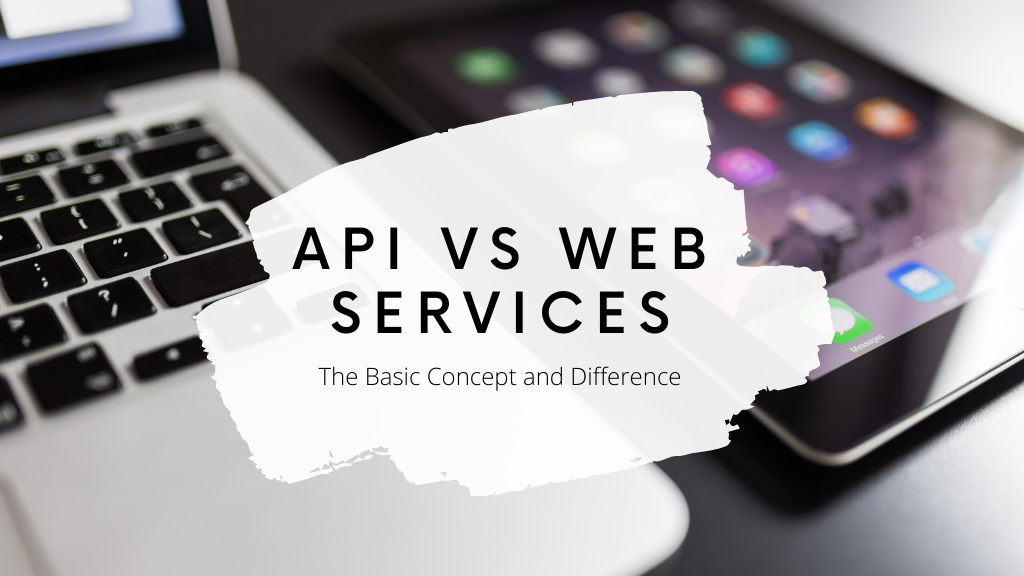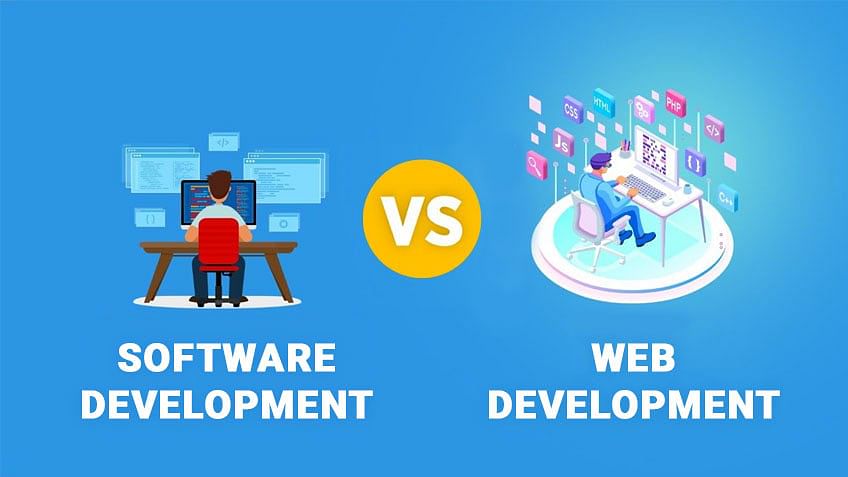Web services and APIs are both crucial for enabling web communication, but they are often misunderstood or used interchangeably, leading to confusion among developers. Though similar in function, they serve different purposes and solve different challenges. While APIs allow applications to communicate, web services enable systems to communicate with each other. Understanding the differences between web services and APIs is essential for leveraging their full potential.
Defining Web Services and APIs
Web Services: Web services are software systems designed to support interoperable machine-to-machine interaction over a network. They are built on standardized web protocols and formats such as HTTP, XML, SOAP, and JSON, providing a platform-independent way to integrate web applications over the internet.
Web services can be categorized into two main types:
- SOAP (Simple Object Access Protocol): A protocol for exchanging structured information in the implementation of web services. It relies on XML for message format and typically operates over HTTP or SMTP.
- REST (Representational State Transfer): An architectural style that uses HTTP requests to perform CRUD (Create, Read, Update, Delete) operations. It operates on a stateless communication protocol, making it lightweight and suitable for distributed systems.
APIs (Application Programming Interfaces): APIs act as interfaces allowing different software applications to communicate with each other. They define the methods and data formats that applications can use to request and exchange information. APIs come in various forms, including libraries, frameworks, protocols, and toolkits.
APIs can be classified based on their purpose:
- Web Service APIs: Accessed over the web using HTTP protocols, enabling interaction with web services, databases, and external platforms.
- Library-Based APIs: Provided as libraries or software development kits (SDKs) for programming languages or frameworks, offering predefined functions and classes.
- Operating System APIs: Provide a set of functions and procedures for interacting with the underlying operating system, enabling access to system resources.
Advantages and Disadvantages
Advantages of Web Services:
- Ease of Use: Simplify the integration and interaction process between applications.
- High Level of Code Reusability: Promote code reusability across multiple applications.
- Communication and Data Exchange: Facilitate real-time interactions between heterogeneous systems.
- Increased Speed: Enhance operational efficiency by facilitating faster data transmission.
- Agile Compatibility: Allow teams to adapt to changing requirements and market dynamics.
- Flexibility and Security: Offer flexibility and robust security mechanisms, such as encryption, authentication, and authorization.
- Platform Independence: Foster interoperability across different operating systems and hardware infrastructures.
Disadvantages of Web Services:
- Limited Browser Accessibility: Cannot be accessed directly from web browsers, adding complexity to development and deployment.
- Constraints on Emerging Technologies: May lag in adopting emerging web technologies.
- Dependency on Implementation for Security: Weak security practices can expose vulnerabilities.
- Reliability of HTTP Protocol: Factors like network congestion or server downtime can disrupt service availability and performance.
Advantages of APIs:
- Enhanced Connectivity: Facilitate seamless communication and data exchange.
- Support for CRUD Operations: Enable developers to perform traditional CRUD operations.
- Versatility with HTTP Verbs: Enhance flexibility in handling requests and responses.
- Browser Accessibility: Allow service data to be exposed to web browsers, enabling dynamic web applications.
- Integration with GUI: Seamlessly integrate with Graphical User Interfaces (GUI).
- Customization Capabilities: Offer high customization levels for specific requirements.
- Authentication and Authorization: Safeguard data integrity and privacy with security mechanisms.
- Support for Multiple Formats: Ensure compatibility and interoperability with various data formats.
Disadvantages of APIs:
- Skill Requirements: Demand expertise in programming languages, posing a barrier for inexperienced developers.
- High Maintenance Cost: Incurring significant costs for updates, bug fixes, and security patches.
- Fixed Scale Requirement: May require a fixed scale, limiting scalability.
- Infrastructural Costs for Scalability: Supporting scalability may incur high infrastructural costs.
Functionality and Use Cases
Web Services:
- Data Exchange: Enable the exchange of data between different applications and systems.
- Service Discovery: Standardized protocols like UDDI (Universal Description, Discovery, and Integration) enable dynamic discovery and access.
- Interoperability: Promote interoperability by adhering to industry standards.
Use Cases of Web Services:
- E-commerce Transactions: Enable secure communication between e-commerce platforms, payment gateways, and banks.
- Enterprise Application Integration (EAI): Integrate various enterprise applications such as CRM, ERP, and SCM systems.
- Cloud Computing: Form the backbone of cloud computing platforms, enabling access to infrastructure, platforms, and software applications over the internet.
APIs:
- Access to Services: Provide access to functionalities and data of web services, third-party platforms, and software libraries.
- Customization and Extension: Allow developers to customize and extend functionalities of existing software applications.
- Automation: Facilitate automation by enabling applications to communicate and perform tasks programmatically.
Use Cases of APIs:
- Social Media Integration: APIs from platforms like Facebook and Twitter allow integration of social features.
- Mobile App Development: APIs from mobile OS and third-party services enable feature-rich mobile applications.
- IoT (Internet of Things) Integration: Enable communication between IoT devices and cloud platforms for real-time data exchange and remote monitoring.
Key Differences: Web Services vs. APIs
- Communication Protocol: Web services use standardized protocols like SOAP or REST over HTTP, while APIs can use various protocols, including HTTP, REST, SOAP, WebSocket, and GraphQL.
- Granularity: Web services are often more coarse-grained, exposing larger units of functionality, while APIs can vary in granularity, providing both high-level and specific operations.
- Data Format: Web services commonly use XML or JSON, whereas APIs can support multiple data formats like JSON, XML, YAML, and Protocol Buffers.
- State Management: Web services, particularly SOAP-based, often maintain state information, while APIs, especially RESTful ones, are designed to be stateless.
Conclusion
Web services and APIs are fundamental building blocks of modern software development, enabling seamless communication, integration, and interoperability between diverse systems and applications. While web services focus on standardized protocols for interoperable machine-to-machine interactions, APIs offer a broader spectrum of functionalities, from web-based interfaces to library-based access points and operating system abstractions.
Understanding the distinctions between web services and APIs is crucial for developers, architects, and technologists navigating digital integration and software development. By leveraging the right combination of web services and APIs, organizations can unlock new opportunities, streamline processes, and deliver innovative solutions that meet the evolving demands of the digital landscape. Investing in robust API development services and specialized .NET development services can further enhance these capabilities, driving efficiency and innovation in your digital ecosystem.

 The Beauty and Benefits of Lab Created Diamond Earrings
The Beauty and Benefits of Lab Created Diamond Earrings  The Beauty and Meaning Behind the Toi et Moi Ring Diamonds
The Beauty and Meaning Behind the Toi et Moi Ring Diamonds  The Impact of Blood Diamonds: Understanding the Global Issue
The Impact of Blood Diamonds: Understanding the Global Issue  Novita Lab Diamonds: Redefining Luxury with Ethical, Sustainable, and Affordable Diamonds
Novita Lab Diamonds: Redefining Luxury with Ethical, Sustainable, and Affordable Diamonds  IGI vs GIA: Understanding the Difference in Diamond Grading
IGI vs GIA: Understanding the Difference in Diamond Grading  Lab Diamonds in Kuala Lumpur: A Growing Trend in the Jewelry Industry
Lab Diamonds in Kuala Lumpur: A Growing Trend in the Jewelry Industry  Platinum vs Gold Lab Grown Diamond Rings: Which is Right for You?
Platinum vs Gold Lab Grown Diamond Rings: Which is Right for You?  The Rise Made Diamonds in Barcelona: A Sustainable Luxury Revolution
The Rise Made Diamonds in Barcelona: A Sustainable Luxury Revolution  Novita Secret Platinum Formula: Unlocking the Secret to Radiant Skin
Novita Secret Platinum Formula: Unlocking the Secret to Radiant Skin 









